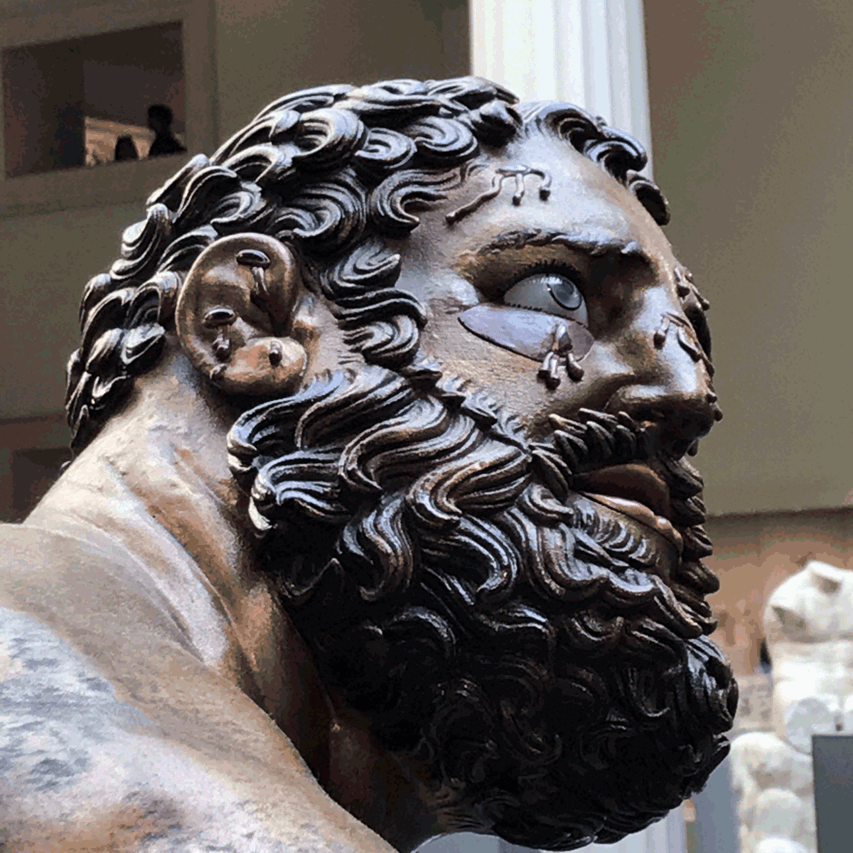November 30, 2022
Met Museum: Chroma: Ancient Sculpture in Color
The "Metropolitan Museum of Art has an exhibition that I first saw years ago in the outskirts of Madrid, Alcalá de Henares. You can find references to this visit here and here. This body of work has finally travelled to New York, expanded and enriched over the years. Chroma: Ancient Sculpture in Color:Exploring the practices and materials used in ancient polychromy, the exhibition highlights cutting-edge scientific methods used to identify ancient color and examines how color helped convey meaning in antiquity, and how ancient polychromy has been viewed and understood in later periods.
What is striking is how we have yet to see ripples of the impact of this exhibition in the intellectual community, including the concurrent Chroma show and the Cubism and the Trompe L'Oeil Tradition, in that both exhibitions challenge our fundamental assumptions about our understand of history... and thus of our understanding of ourselves in the Western tradition.
In particular, the Chroma show challenges our understanding in what the austere meant then and now, of how we saw ourselves as a reflection of the Classical epoch. One recent example among no doubt many others would be a rewiring of the ideas that Clement Greenberg presented in his essay Avant-Garde and Kitch, kitsch being an art object considered to be in poor taste because of excessive garishness or sentimentality. The ancients no doubt understood what grandeur was, but now we must appreciate that they were able to see this quality within what we must now are compelled by these exhibitions as grandeur within the garish. What does it mean that now we are compelled to imagine a multicolored Platonism?
***
Personally, what I had found striking in terms of the recent sculptures that I had made recycling my paintings on canvas into sculpture (JOB and JOBx2) was the intense corporeality in the recreations of the sculptures in the Chroma exhibition. In particular, the figure of the boxer. A snip from the Met's website:The figure of the boxer displays heavily bleeding wounds on the face and the ears. The blood, fashioned of copper, is mostly well-preserved, and for the reconstruction it has been restored in those areas where it is missing. In the original, a sheet of bronze with a high lead content was applied underneath the right eye to represent a hematoma. For the reconstruction, this black eye was cast using a comparable alloy, which, together with an artificial patination, resulted in a dark shade of violet. The swollen lips and the nipples were formed separately in copper, and this was imitated for the reconstruction. Garnets were inserted in the larger wounds in order to reproduce the gleaming effect and the density of fresh blood.
This is why I found the Boxer so resonant: I paint in a way that includes the form of impasto paint. The vocabulary of forms that I rely on all are instantiations of the corporeal body of oil paint. Over the years, I have tried to increase an aspect of cruciality of this formalism, by way of these forms mashing into one another, as a way to heighten this embodiment by placing forms in extremis.
My painting possesses and exploits the sculptural dimension. By using literal paint on canvas itself as a sculptural material, I wanted to involute what it meant to be painting and to be sculpture. To render this ambition into the human form seemed to heighten the tension in a most extreme way.
Posted by Dennis at November 30, 2022 1:34 PM
Leave a comment